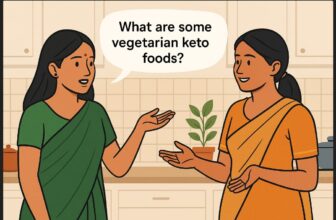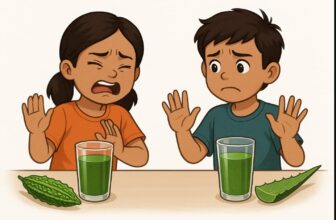Indian vegetarian cuisine is often misunderstood or oversimplified. Whether due to cultural stereotypes or a lack of familiarity, many people don’t realize the richness and diversity of this food tradition. In this article, we’ll explore 17 common myths and reveal the true story behind them.
1. It’s All About Curry
Reality:
Though curry is iconic in Indian cuisine, it represents just one part of a vast spectrum of dishes. From crispy dosas to hearty rice dishes, Indian vegetarian meals vary by region and offer a broad array of flavors and textures.
2. Every Dish is Overwhelmingly Spicy
Reality:
While heat is a key component in some dishes, not all Indian vegetarian food is spicy. Many dishes focus on aromatic spices and herbs rather than intense heat, such as cumin, turmeric, and coriander. There’s something for every palate—mild, flavorful options are abundant.
3. It’s Unhealthy and Heavy
Reality:
Indian vegetarian meals can be incredibly healthy when prepared with whole ingredients like vegetables, legumes, and whole grains. Dishes like dal, sabzi, and roti are balanced, nutritious, and provide essential vitamins, fiber, and plant-based proteins. Of course, deep-fried snacks exist, but they are not representative of the entire cuisine.
4. Rice and Lentils Are the Only Staples
Reality:
Though rice and lentils are staple ingredients, Indian vegetarian food offers a wider variety, including millets, chickpeas, tofu, and fresh vegetables. The diversity of grains and legumes in Indian cooking adds richness to every meal, offering options that go far beyond dal and rice.
5. Cooking It Is Too Complicated
Reality:
Indian vegetarian dishes can be simple to prepare. Meals like poha, aloo paratha, or khichdi can be made quickly with just a handful of ingredients. While some recipes might take a bit more time, the basics of Indian cooking are easy to master and can be prepared in under an hour.
6. There’s No Protein in Vegetarian Meals
Reality:
Indian vegetarian food is a rich source of plant-based protein. Dishes made with lentils, beans, chickpeas, and paneer are full of protein. Meals like dal, rajma (kidney beans), and chole (chickpeas) provide all the necessary protein without the need for meat.
7. Deep-Frying is the Norm
Reality:
Although some snacks in Indian cuisine are deep-fried, many are not. Indian meals often rely on grilling, sautéing, steaming, and slow-cooking to create layers of flavor without excess oil. Simple dishes like vegetable curry, dal, and chapati are far from greasy.
8. The Flavors Are Bland
Reality:
Indian vegetarian food is bursting with flavor, thanks to a wide range of spices. Indian dishes balance sweet, savory, sour, and spicy elements. Whether it’s the cumin in dal or the tanginess of tamarind in chutneys, each meal is carefully crafted to deliver depth and richness.
9. It’s Only for Vegetarians
Reality:
Non-vegetarians enjoy Indian vegetarian food too. Many iconic dishes like dosa, samosas, and chole bhature are enjoyed by people from all dietary backgrounds. Indian vegetarian food offers something for everyone, whether you’re a vegetarian or not.
10. It Won’t Keep You Full
Reality:
Indian vegetarian meals are often hearty and filling. Dishes like dal with rice, stuffed parathas, and vegetable pulao provide a perfect balance of nutrients that keep you full and energized for hours. These meals are designed to be satisfying and balanced.
11. It’s Only for Special Occasions
Reality:
While some dishes like biryani or sweets like gulab jamun are reserved for festivals, many Indian vegetarian meals are enjoyed daily. Simple meals like dal, roti, sabzi, and rice are a staple in most homes, making vegetarian food an everyday delight, not just for special occasions.
12. Vegetarian Cuisine is Regional
Reality:
While Gujarat, Punjab, and Rajasthan are known for their vegetarian dishes, Indian vegetarian food spans the entire country. From the south’s dosa and sambhar to the east’s pakhala and the north’s aloo paratha, every region has its own unique vegetarian specialties.
13. It’s Packed with Dairy
Reality:
While dairy is an important part of many Indian vegetarian dishes, there are plenty of dairy-free options. With the rise of plant-based eating, you’ll find vegan alternatives like soy milk, coconut milk, and almond milk in many recipes. Dishes like chana masala, baingan bharta, and vegetable curries are dairy-free by nature.
14. It’s Expensive to Make
Reality:
Indian vegetarian food can be quite affordable. Staples like rice, lentils, vegetables, and spices are inexpensive and readily available. You don’t need to spend a fortune to create flavorful and nutritious meals. In fact, street foods like pani puri and vada pav are not only delicious but also budget-friendly.
15. It’s Hard to Digest
Reality:
Indian vegetarian food is often designed with digestion in mind. Ingredients like ginger, cumin, and fennel are commonly used for their digestive properties. Dishes like khichdi are considered easy to digest, and even more complex meals are typically prepared with ingredients that promote gut health.
16. It’s Always Too Rich
Reality:
While some dishes can be rich (especially those with ghee or cream), many Indian vegetarian meals are light and healthy. Simple dishes like moong dal soup, vegetable pulao, or steamed idlis are flavorful yet easy on the stomach, offering a lighter option when desired.
17. It’s Full of MSG
Reality:
MSG is not a traditional ingredient in Indian cooking. While some packaged foods or restaurant dishes might include MSG, traditional Indian food relies on natural spices and herbs for flavor. The rich and complex flavors come from fresh, whole ingredients, not artificial additives.
Closing Remarks
Indian food is an incredibly diverse and flavorful part of the global culinary landscape. By dispelling these myths, we can better appreciate the complexity and variety it offers. Whether you enjoy simple home-cooked meals or elaborate regional specialties, Indian vegetarian food is something that everyone can enjoy, no matter their dietary preferences.





